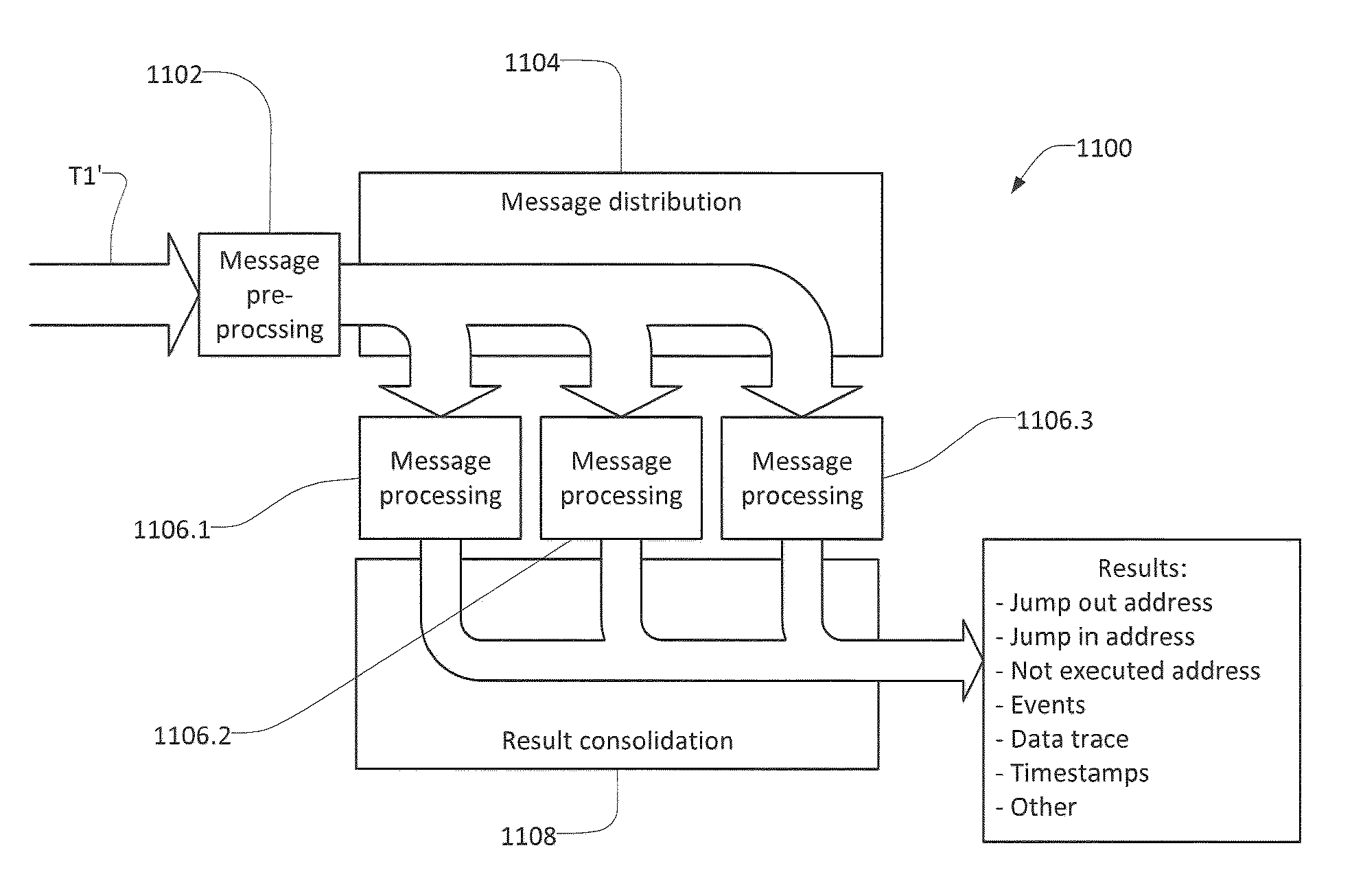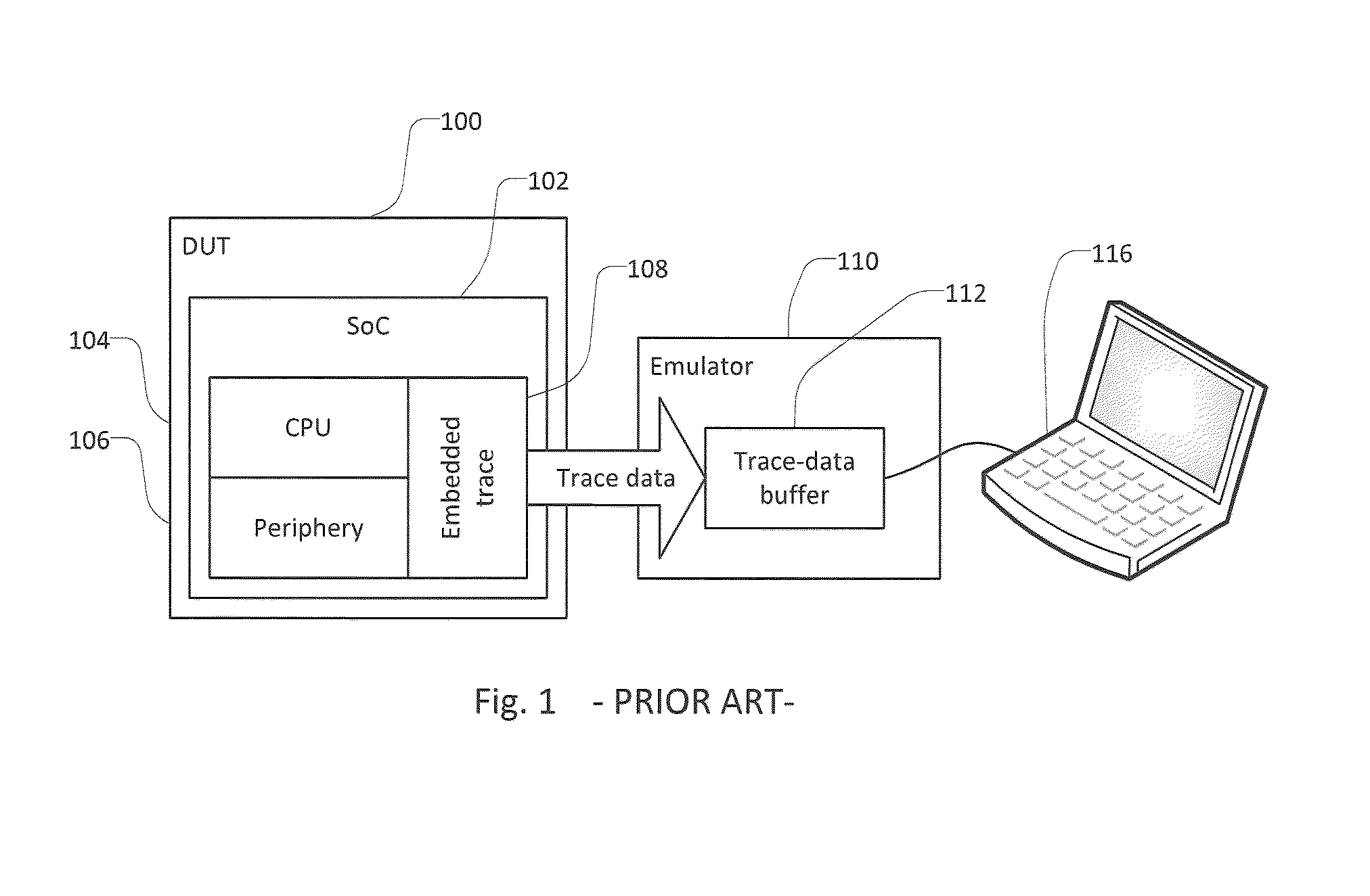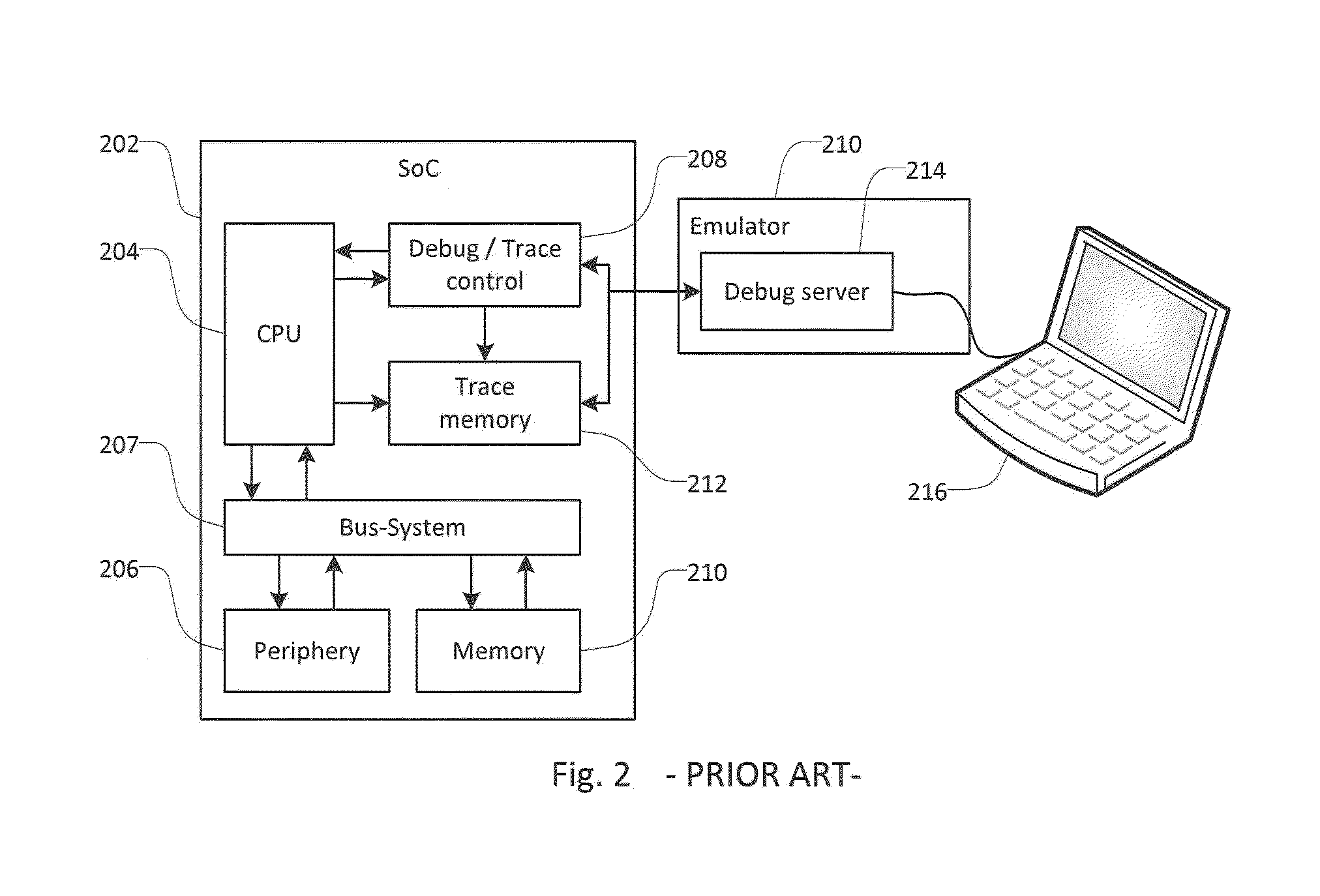Trace-data processing and profiling device
a profiling device and trace data technology, applied in hardware monitoring, specific program execution arrangements, digital circuit testing, etc., can solve the problems of insufficient trace-bandwidth in some application cases, data evaluators will not be able to identify a trace-message or identify, and the required band width increases distinctively, so as to reduce the number of memory accesses and accelerate processing
- Summary
- Abstract
- Description
- Claims
- Application Information
AI Technical Summary
Benefits of technology
Problems solved by technology
Method used
Image
Examples
Embodiment Construction
Prior Art
[0111]FIG. 1 shows an arrangement of a device under test and an emulator in a simplified block diagram. The arrangement of FIG. 1 is as such known in the prior art. The arrangement comprises a device under test 100, which comprises an embedded processor in form of a System-on-Chip (SoC) 102. The embedded processor comprises a central processing unit 104, which is connected with periphery units summarized by block 106. The processor and the periphery are connected with an embedded trace unit 108. The embedded trace unit 108 collects internal state information of the central processing unit 104 and the periphery, filters and provides a stream of trace data in compressed form at its output to an emulator 110. The emulator comprises a trace-data storage device 112, which receives the stream of trace data and performs recording of the trace data received. The buffered trace data are read out and computed by a PC 116. Thus, no trace-data processing is performed by the emulator 11...
PUM
 Login to View More
Login to View More Abstract
Description
Claims
Application Information
 Login to View More
Login to View More - R&D
- Intellectual Property
- Life Sciences
- Materials
- Tech Scout
- Unparalleled Data Quality
- Higher Quality Content
- 60% Fewer Hallucinations
Browse by: Latest US Patents, China's latest patents, Technical Efficacy Thesaurus, Application Domain, Technology Topic, Popular Technical Reports.
© 2025 PatSnap. All rights reserved.Legal|Privacy policy|Modern Slavery Act Transparency Statement|Sitemap|About US| Contact US: help@patsnap.com



